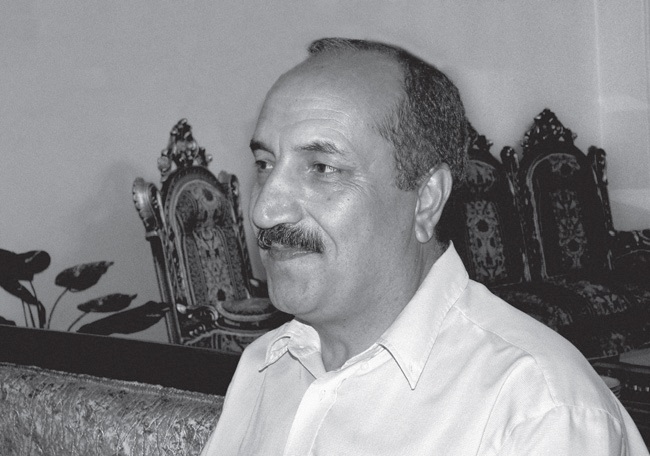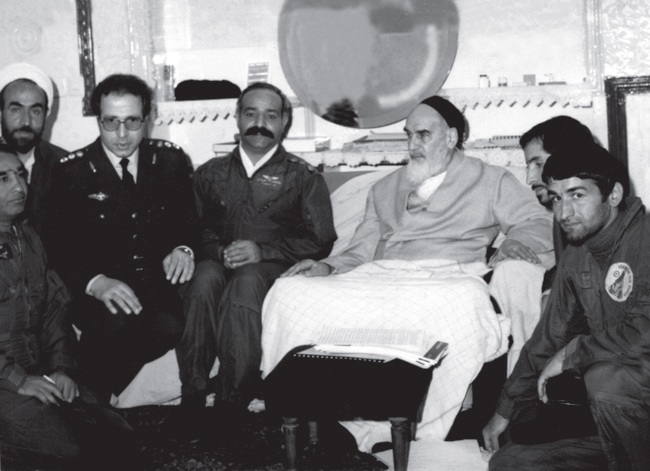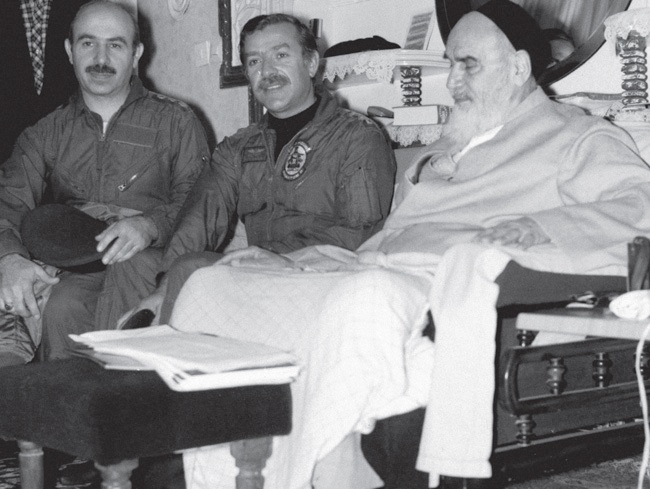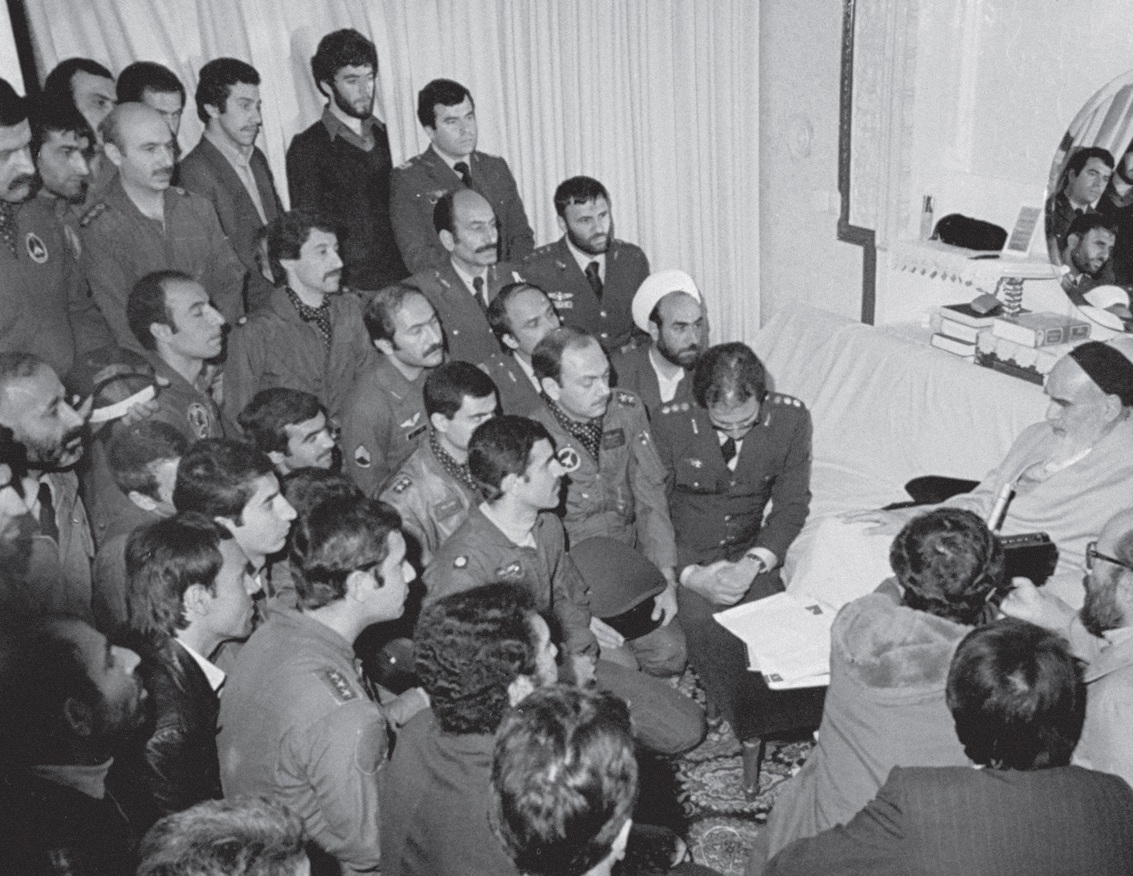Air Raid to Al-Waleed (32)
The Story of Demolishing Fighters and the Equipment in Al-Waleed Triple Military Bases Known as H-3
2016-8-13
Air Raid to Al-Waleed (H-3)
The Story of Demolishing Fighters and the Equipment in Al-Waleed Triple Military Bases Known as H-3
By: Brigadier General Ahmad Mehrnia
Tehran, Sooreh Mehr Publications Company
2010 (Persian Version)
Translated by: Zahra Hosseinian
Second Brigadier General Abdul Hamid Najafi says:
"We heard that the pilots we were concerned about them from morning, have returned safety, while we had just landed after air cover of region. For this reason, we quickly headed to the hangar in front of which a group of our colleagues had gathered, and we kissed the face of these heroes when we found out what a great event has occurred. At the same time, hearing the story of Khazraei, we thought that it is concocted and he and his co-pilot have martyred very likely. Because such things wasn’t unusual! "
Colonel Ruhollah Javid, pilot of rear cockpit of F-4 in the mission says:

Colonel Ruhollah Javid (2008)
"Two or three other colleagues and I were not involved with flight plan and came to the command post late at night and were busied preparing operational instructions and route maps for the group according to the command. We stayed until morning and finished all works and didn’t go home, when our colleagues came and did their brief. Until noon, we waited about the aircrafts returned. Radar of command post had received some news about not returning of one of aircrafts at the first moments of their arrival at the insider border. I don’t know what happened, but all spoke about Major Khazraei, despite the lack of knowledge of the event. Interestingly enough we realized that this rumor is true, after aircrafts landed. We didn’t know what has occurred, so each of us went toward the pilot with whom we had more friendly relationships, and asked about the things. Finally, we thankfully heard that Khazraei and Bagheri are safe and sound and have landed in Syria.
That evening I dropped into TV room of officer’s residence which was named BOQ by us, and our friends often gathered there. To my surprise, I saw Khazraei was busied watching television. I doubted to myself and my eyes, believe me; he must be in Syria, how on the earth he is here? I greeted him warmly and after kissing him I asked: "Sir! Weren’t you in…?" he said: "yeah, it was written in stars to return Tehran by a refueling aircraft and then was sent to Hamedan by a helicopter."
After being welcomed by colleagues and friends, the flight team goes to maintenance battalion to fill the aircraft forms and write possible defects, then place their flight equipment on their special bars in the relevant branch, and then go to the command post. The information officer immediately gives special forms to all of them to write their observations in the rout and over the target, and also the amount of destruction, etc. Therefore their new hot information is registered and sent to the center.
Retired colonel Ibrahim Pourdan, who has participated in H-3 operations as the pilot of rear cockpit in Major Kazemi’s aircraft, says:
"Immediately after returning from mission, a group of reporter from Hamedan’s broadcasting came to the base and interviewed with pilots in addition to shooting, but it wasn’t broadcasted ever. When I asked about it from my friends who were working in Hamedan’s broadcasting, one of them said: "My good friend, because some of you have forgotten to say "Bismillah" at the beginning of your speech, it wasn’t possible to broadcast it." In short, I should say that this unique operation didn’t get its deserts."
Although none of members of the team was encouraged for this amazing operation by state authorities and officials of organization, except Maj. Mahmoud Khazraei who had been promised by Maj. Baratpour, operation deputy and flight leader, that if they came back safety, he would have promoted him; but close and face to face meeting with Supreme Leader of the Revolution, Imam Khomeini was the greatest gift for the team, most of which could participate in it[1]. Each moment of the meeting has stuck in the minds and people like Varzandi, who failed to attend for a reason, still regretted[2]. Recording photos of that visit in this book, some of which exposed publicly for the first time, it is an invaluable relic which can revive the memory of that day.

Left: Major General Shahid Abbas Babaei, anonymous, Imam Khomeini, Colonel Mashallah Omrani, Major General Shahid Fakouri, Colonel Aziz Bozorgnia, and Mohammadi Golpayegani.
Remembering the spiritual atmosphere of that meeting, Amir Baratpour says:
"Imam asked me to go close to him and honored and appreciated our action, as soon as realized that I was the leader of operations. A reporter came to interview with me when I came out of Imam’s house and asked me about the particulars of mission. I answered appropriately. At the end, he asked if we are willing to repeat such a dangerous mission. "We are the man of fighting, we fight manly." I replied with a special passion. This part of the interview was broadcasted the next day and since then it became a famous slogan which even was repeated by our dear Imam in his speeches."
In addition to visit Imam Khomeini, Major Bharatpur could separately visit Ayatollah Ashrafi Esfahani, the leader of the Friday prayers in Kermanshah. He speaks about that meeting as follow:

Visit of Colonel Fereidoun Izadseta and Parviz Pirooz, designers of H-3 operation with Supreme Leader of the Islamic Revolution.
"Ayatollah Ashrafi Esfahani had been informed of the story of Al-Waleed or H-3 mission and its importance. One day, after performing Friday Prayers, he sent a message to go visit him when heard I'm among the worshipers, and treated me very cordially. While I did not expect, he bent and kissed my hand for thanking when we were shaking hands. His surprising act gave me such a positive energy that my determination to confront the enemy doubled."

Visit of a group of pilots, who participated in the Al-Waleed air strike, and other personnel with the supreme leader, Imam Khomeini, on April 6th, 1981; Hojjat al-Eslam Mohammadi Golpayegani and Mostafa Chamran can also be seen.__
[1]. It should be noted that at the morning of April 7th 1981, a group of first pilots who had participated in the operations, along with Col. Fakouri, commander of the Air Force, and Dr. Chamran, Imam’s representative in the Supreme Defense Council, visited the supreme leader and being sympathized. The other day, another group of pilots could have a memorable and historic visit with Imam Khomeini. A significant number of memorial photographs of this meeting have been recorded in the book.
[2]. A few numbers of pilots who were responsible for the flight or other issues, such as Varzandi who was hospitalized because of poisoning, lost the opportunity of visiting the leadership.
Number of Visits: 6702








The latest
Most visited
How to send Imam's announcements to Iran
In the first part, the issue of funds, Hajj Sheikh Nasrallah Khalkhali - who represented most of the religious authorities - was also the representative of Imam. In Najaf, there was a money exchange office that cooperated with the money exchange offices in Tehran. Some of the funds were exchanged through him.Operation Beit al-Moqaddas and Liberation of Khorramshahr
After Operation Fat’h al-Mobin, we traveled to Kermanshah and visited Sar-e-Pol-e-Zahab before heading to Ilam. During Operation Beit al-Moqaddas, the 27th Brigade was still receiving support from the West. We maintained contact with individuals who had previously worked in Area 7 and were now leading the brigade. It was through these connections that I learned about Operation Beit al-Moqaddas.Memoirs of Hujjat al-Islam Reza Motalebi
Hujjat al-Islam Reza Motalebi is a cleric from Isfahan. Before the revolution, he was the imam of the Fallah Mosque – which was later renamed Abuzar Mosque. By his presence and efforts, Abuzar Mosque soon became a base for supporters of the Imam and the revolution. After the victory of the revolution, he played a role in uniting forces and maintaining political vitality in southwest Tehran.The Necessity of Receiving Feedback in Oral History
Whenever we engage in a task, we naturally seek ways to evaluate our performance — to correct shortcomings and enhance strengths. Such refinement is only possible through the feedback we receive from others. Consider, for instance, a basketball player whose shots are consistently accurate; should he begin shooting blindfolded, his success rate would rapidly decline, as he would be deprived of essential feedback from each attempt.

